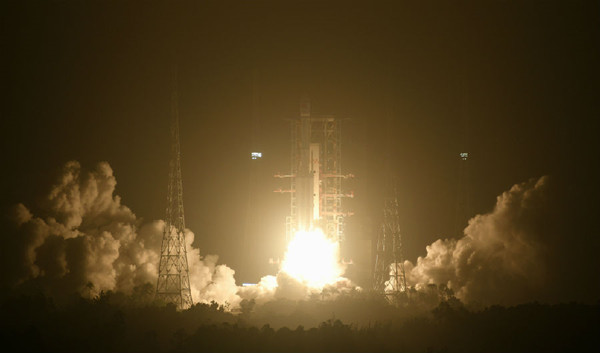China Launches New Medium-Sized Carrier Rocket
A Long March 7A carrier rocket, China's new generation medium-sized liquid rocket, was launched from the Wenchang Space Launch Center in South China's Hainan Province on March 12, sending the New Technology Demonstrator 9 experimental satellite into orbit.
Developed by the China Academy of Launch Vehicle Technology, a subsidiary of China Aerospace Science and Technology Corporation (CASC), the three-stage rocket is 60.1 meters long and has a liftoff weight of 573 metric tons.
Mainly used to launch geosynchronous satellites, the rocket is capable of placing a 7-ton spacecraft into the geosynchronous transfer orbit and at the same time launching satellites into high-altitude orbits like the geosynchronous transfer and inclined geosynchronous orbits.
The launch on March 12 marked the 362nd flight of the Long March rocket series.
The new rocket is scheduled to carry three to five missions annually before 2025.
A fairing with a larger diameter is now under development to be available for deep space exploration missions to the moon, Mars and asteroids.
The New Technology Demonstrator 9 experimental satellite, developed by CASC's China Academy of Space Technology, will be used for in-orbit new technology verification tests of space environmental monitoring.
The satellite was developed within eight months, a record for all-sizes of remote sensing satellites of the company.

The Long March 7A carrier rocket, carrying the New Technology Demonstrator 9 experimental satellite, is launched from the Wenchang Space Launch Center in South China's Hainan Province on March 12. [Photo/sasac.gov.cn]
(Executive editor: Wang Ruoting)



